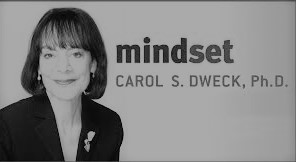Create a growth mindset and avoid a fixed mindset
 Dr. Carol Dweck and her
colleagues studied students’ attitude about failure. They came up with the
underlying principles of learning and intelligence as fixed mindset and growth
mind set. From an educationist point of view, I will try to explain when
students develop fixed mindset or growth mindset and how can teachers help in
developing a growth mindset in students?
Dr. Carol Dweck and her
colleagues studied students’ attitude about failure. They came up with the
underlying principles of learning and intelligence as fixed mindset and growth
mind set. From an educationist point of view, I will try to explain when
students develop fixed mindset or growth mindset and how can teachers help in
developing a growth mindset in students?
Understanding how the brain works
is the first step towards growth mindset. Students as young as in primary
school need to learn how the brain has neurons and how they are inter-connected
making a network. By learning about the brain and how it works, students develop
an understanding that their mindset is not fixed but changeable, they will put
more effort in developing a growth mindset. How can this understanding be
developed?
Brainstorming on what the brain
does? What is intelligent? Do we have equal intelligent? Are animals
intelligent? Can we improve our intelligent? is a good start point. Then
teaching them about neurons and how they are interconnected can be discussed. A
growing child who initially cannot speak gradually gets to speaking, learns the
language – words then sentences – is a good example on making the students
believe that they can change and improve their intelligence.
Research has found that when
students believe that their efforts give them the outcome they desired, they
put in extra time and more effort making their way to more success. Success
breeds success. Research in neuro science explain this phenomena very well. The
nerve cells or neurons in our brain are interconnected and broader experience
can change and extend this network. With practice and extended activities the
existing network is strengthen and new connections are developed. The brain
cells also form insulations sheets that transmit information more quickly.
It means that by doing extra and
extended activities, our brains ability to process information is increased. It
is the same logic as a novice runner plans to run 10KM. Since he/she has never
ran, initially it is difficult and painful. So may be he/she starts by running
2km a day. This initial running is painful and the muscles hurt. By continuing
the exercise the person can run 5, then 8 then 10km according to his/her own
pace. It does not mean that the muscle pain fades away, but that the muscles
get stronger to overcome the pain. Same situation can be observed in weight
lifting. A person who can’t lift 20 pounds at the start of exercise can lift
100 pounds after working out for a long time. That’s because the muscles become
larger and stronger with exercise. Just like a runner or a weightlifter through
brain exercise one can grow a stronger brain. Sometimes it is hurtful but when
one feels getting better and stronger, all the work is worth it. The more you
challenge your mind to learn, the more neuron connections you make in your
brain. If you continue to strengthen these connections, things you once found
very hard to do become easy and you get a stronger and smarter brain.
Teachers’ feedback has a very
great impact on changing students’ mindset. Generally in our schools the well-performing
students are praised for their good work. Teachers consider their work as
perfect with not further changes or improvements. One would wonder that this is
the best way to help the child improve. But interestingly, research has found
that such attitude develops a fixed mind set in well-performing students (No
improvement needed!!! Right?). It means that telling students they are smart is
developing a fixed mindset. To cultivate a growth mindset teachers should
praise the hard work and the efforts that the student has put in the work and
should provide further guidance.
With other students in the class
who are not able to perform very well, the teacher should provide specific feedback
(on their assignment, test paper or verbally). Once students have done a
test/assignment and the teacher has check it, detailed written feedback should
be given. One may say that students do not bother reading the feedback,
teachers should spend 15-20mins of the class giving students time to read the
feedback and correct their mistakes on a separate sheet of paper. Processing
their errors makes students deeply involved in it, greater learning from it and
correcting it. The teacher may choose not to check it again (so it is not an
extra burden) but to let students peer check each other’s corrections.
When students have a growth
mindset, they take on challenges and learn from them leading to increased
abilities and achievement. It is time to harness the failures that we encounter
not only in schools but in everyday life. Build on your failures and feel proud
for your learning.
This post first appeared on Pamir Times https://pamirtimes.net/2018/10/07/create-a-growth-mindset-and-avoid-a-fixed-mindset/

Comments
Post a Comment